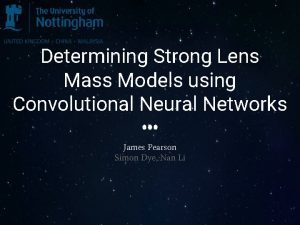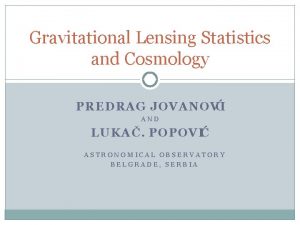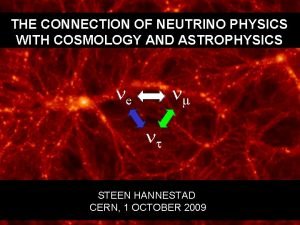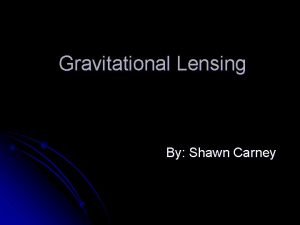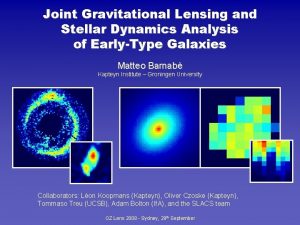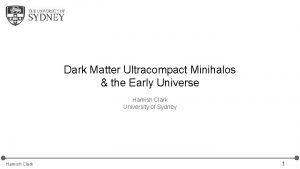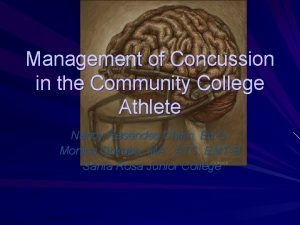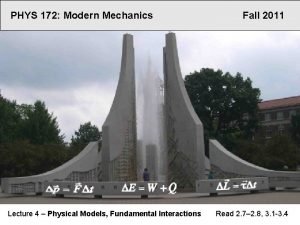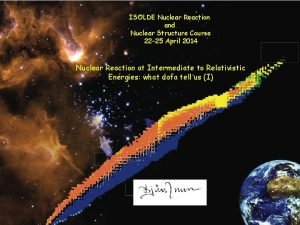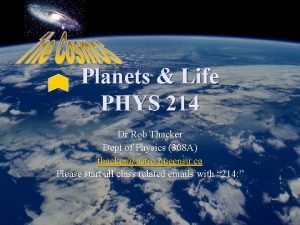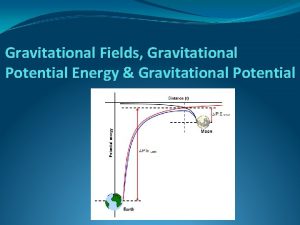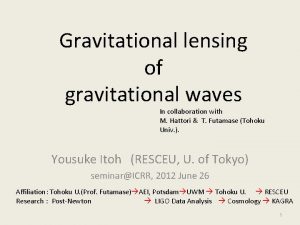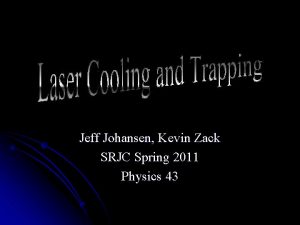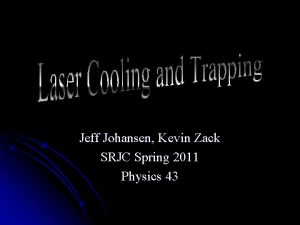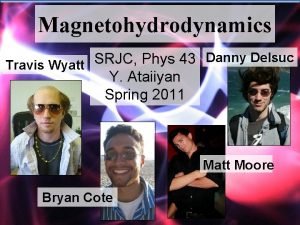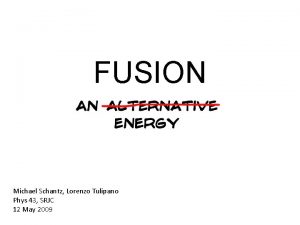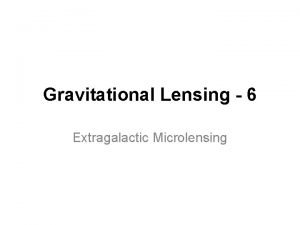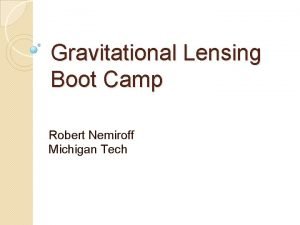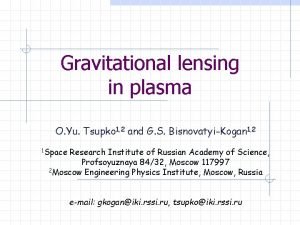GRAVITATIONAL LENSING Phys 43 SRJC Spring 2011 May















- Slides: 15

GRAVITATIONAL LENSING Phys 43 SRJC Spring 2011 May 9, 2011 Roman Savinov Karan Kanagasabapathy Carlos Plascencia Attention! must be seen in the full screen mode. Hit below

GRAVITATIONAL LENSING • What is Gravitational Lensing • Types of Lensing • Why do we care • How these things are found

What is Gravitational Lensing Light does not always travel in straight lines… … massive objects deform the fabric of space itself. . . … when light passes one of these objets, such as a cluster of galaxies, its path is changed slightly.

What is Gravitational Lensing This effect is called gravitational lensing. It is only visible in rare cases and only the best telescopes can observe the related phenomena.

What is Gravitational Lensing

What is Gravitational Lensing simulation of gravitational lensing caused by a Schwarzschild black hole passing in front of a background galaxy. Unlike an optical lens, maximum 'bending' occurs closest to, and minimum 'bending' furthest from, the center of a gravitational lens. So lensing effect can magnify and distort the image of the background source. Hit Me source image remains constant, but The surface brightness of the its angular size vary, hence producing an amplification of the galaxy luminosity as seen by a distant observer. Maximum amplification occurs when the galaxy (or in this case a bright part of it) is exactly behind the black hole.

What is Gravitational Lensing Einstein Ring Gravitational Lens: SDSS J 162746. 44 -005357. 5 If the distant galaxy, the lensing mass, and the observer lie in a straight line, the original galaxy will appear as a ring around the massive lensing object, called Einstein ring. If there is any misalignment the observer will see an arc segment instead. Einstein Ring Gravitational Lens: SDSS J 120540. 43+491029. 3

What is Gravitational Lensing More commonly, when the lensing mass is complex (such as galaxy groups and clusters), the observer may then see multiple distorted images of the same source… Got it? …. the number and shape of these images depend upon the relative positions of the source, lens, and observer, and the shape of the gravitational well of the lensing object.

Types of Lensing There are three classes of gravitational lensing • Strong lensing: lensing effect that is strong enough to produce multiple images, arcs, or Einstein rings • Weak lensing: Einstein Cross. Four images of the same distant quasar appear around a foreground galaxy due to strong gravitational lensing. In this type of lensing the distortions of background sources are much smaller and can only be detected by analyzing large numbers of sources to find coherent distortions of only a few percent. Thus it is an intrinsically statistical measurement. • Microlensing no distortion in shape canmany be seen but shifts the amount of light Weak gravitational lensing causes subtle in the path of areceived light ray fromthe a background object changes in time. Theof effect small, which as it crosses universe. This diagram shows the path light isfrom several produces images separated only a few arcseconds galaxies (blue ovalsmultiple at the back of the box) as by it journeys toward us Hit Me

Why do we care Abell 2218 Gravitational lenses can be used as gravitational telescopes. The concentrated light from objects seen behind gravitational lenses makes very faint objects appear brighter, larger and therefore more easily studied. One of the most distant object in the universe was discovered by the gravitational lensing effect. Abell 2218, a cluster of galaxies about 2 billion light-years away, was used as lens to see a galaxy some 13 billion years old This galaxy at the background of the Abell 2218 A faint galaxy is outlined by a white ring in the shape of a Abell 2218 is seen from Earth as it would have been just 750 sausage. The image is elongated due to the gravitational-lensing million years after the Big Bang. effect of a closer galaxy cluster. Hit Me

Why do we care Observations of gravitational lensing can also be inverted to examine the lens itself. Gravitational lensing is particularly useful if the lens is for some reason difficult to see. If the foreground lensing star has a planet, then that planet's own gravitational field can make a detectable contribution to the lensing effect. Gravitational lensing can probe the amount and distribution of mass. Mass of the universe is dominated by invisible dark matter. The mass of lens’s constituent particles and their crosssection affect the distribution of dark matter in lens systems. Thus it is possible to determining how much dark matter they contain Hit Me


3 D map of the large-scale distribution of dark matter, reconstructed from measurements of weak gravitational lensing with the Hubble Space Telescope.

How these things are found In the past most of the gravitational lenses have been discovered accidentally Today the search is done at 20 GHz frequency in the radio domain of the electromagnetic spectrum A big chunk of known lenses today were discovered by VLA -radio astronomy observatory in New Mexico The lensing is easier to detect and identify in simple objects compared to objects with complexity in them Very Large Array (VLA) - a radio astronomy observatory in New Mexico. Was used to discover most of the gravitational lenses known today.

Resources http: //en. wikipedia. org/wiki/Gravitational_lens http: //www. spacetelescope. org/science/gravitational_lensing/ http: //dougintology. blogspot. com/2007/10/gravitational-lensing. html http: //hetdex. org/dark_energy/how_find_it/gravitational_lensing. php http: //en. wikipedia. org/wiki/Methods_of_detecting_extrasolar_planets
